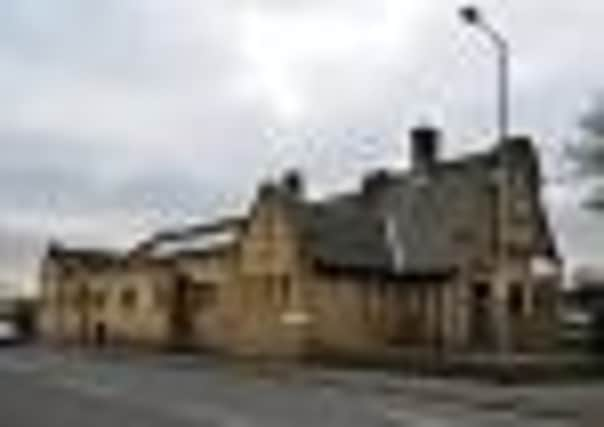Region’s heritage treasures are put on danger list


But now Manningham Pool in Bradford and Temple Works in Leeds have been named as two of the most threatened historic buildings in the country, in a new “top ten” list of Edwardian and Victorian Buildings deemed at risk.
The list has been compiled by the London-based Victorian Society, which champions the finest buildings from one of Great Britain’s grandest ages.
Advertisement
Hide AdAdvertisement
Hide AdThe society was part of the campaign earlier this year to keep Bradford’s “unique and extraordinarily intact” pool in Manningham open after it was earmarked for closure in March as part of the £80m cuts imposed on Bradford City Council by the Government.
Despite the best efforts of protesters, the pool was closed in July, and the water drained two months later. Bradford councillors were told a backlog of repairs of around £1.2m had sealed its fate.
But Dr Ian Dungavell, director of the Victorian Society, said the 107-year-old pool was “unique” and “of national importance” owing to its perfectly-preserved period features such as the original changing cubicles around the edge of the pool and the ceramic spittoons along the side.
“Nowhere else in the country could you – until recently – swim in a pool so close to the appearance of an ‘ordinary’ pool of the turn of the century,” he said. “This truly remarkable survival should be used and celebrated by swimmers in Bradford – not left to rot.”
Advertisement
Hide AdAdvertisement
Hide AdThe society warned pool buildings are “notoriously hard” to find new uses for, and that the longer Manningham Pool lies empty the harder it will be to save. Since it closed it has been broken into three times.
“This rare survivor from 1904 deserves better”, said Dr Dungavell.
Bruce Barnes, a local resident and frequent user of the pool until its closure in July, said it was “a tragedy” to see such a unique piece of Yorkshire’s heritage being allowed to simply fall apart.
“It’s already in a much worse state than when they closed it,” he said. “We urgently need someone to come forward and save the pool before it’s too late.”
Advertisement
Hide AdAdvertisement
Hide AdIn danger, too, is the magnificent Temple Works in Leeds, a Yorkshire mill built 150 years ago. Also known as Temple Mill, in Marshall Street, the Temple Works was built to house part of John Marshall’s 19th Century flax empire and was inspired by the ancient Egyptian Temple at Edfu. It is listed at Grade I, putting it in the top 2.5 per cent of all listed buildings in the country.
For Temple Works, at least, a plan is being drawn up in an effort to save the building. Owner Arndale Properties has permission for it to be used for a wide-ranging arts and cultural programme, and it approached Susan Williamson of Cornerstone Strategies in 2008 to help rejuvenate the landmark and ensure its continued relevance.
Her efforts to transform the building into an arts and cultural hub have seen some success – with funding brought in by its use as a film location for projects such as Channel Four’s Red Riding, and more than 30,000 visitors in 18 months
But works are still ongoing to repair damage dating back to 2008 when part of one of the exterior pillars collapsed sending a block of stone onto the pavement in Holbeck. And the building is included in the Heritage At Risk register by English Heritage, which rates it as a ‘level B’ – meaning at risk of further immediate deterioration.
Advertisement
Hide AdAdvertisement
Hide AdDr Dungavell said: “The mill’s weaving shed is an astonishing space, stretching over two acres and lit from above by sixty-five conical glass domes.
“But its vaulted ceiling needs repairs, and three years ago one of the mill’s pillars collapsed. A clear plan is needed for the whole site to secure its future.”
The building’s architect, Joseph Bonomi, was an Egyptologist, and used his detailed knowledge of ancient temples to include lotus columns, snake motifs and hieroglyphics. When it was completed in 1843 its vast single-story weaving shed was described as the largest room in the world.
Director of Temple Works Susan Williamson said: “It is so special, so unique. I’m not an arts person – I taught architecture and design for years, and I taught this building long before I came here. When the owners approached me in 2008, I couldn’t believe it.”
Advertisement
Hide AdAdvertisement
Hide AdShe is hopeful the work they are doing will help restore its importance to the city and ensure its survival, echoing the belief of the Victorian Society, which urges owners to find modern uses for which respect the unique character of historic buildings.
Historic assets at greatest risk
THE list also includes Broadmoor Hospital; an abandoned railway station near Peterborough; a terracotta YMCA building in South Wales and a building threatened by the redevelopment of London Bridge station.
Berkshire’s Broadmoor Hospital, which first opened in 1863, features in the list because of plans to demolish part of the building in order to make way for a new psychiatric hospital.
Wansford Railway Station in Sibson-cum-Stibbington is partly in use as part of a heritage railway service but is included because Nene Valley Railway has not been able to buy the site to carry out restoration.
Advertisement
Hide AdAdvertisement
Hide AdThe South Eastern Railway Office in Tooley Street, London, is threatened by plans to redevelop London Bridge station and has been refused listing.
The Victorian Society has also voiced concerns about the former YMCA building in Merthyr Tydfil, the 19th centre Ancoats Dispensary in Manchester, which was painted by Lowry, a rectory in Cornwall and a cricket pavilion in Bletchley.